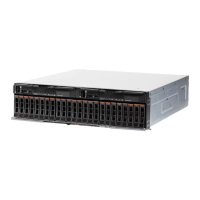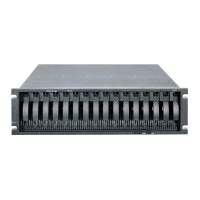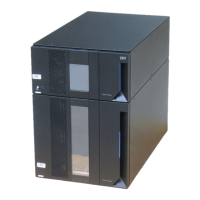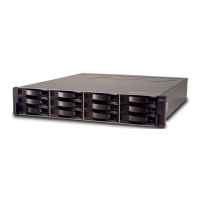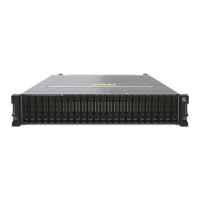Chapter 7. Advanced maintenance, troubleshooting, and diagnostics 393
7.5.6 Preparing the new storage subsystem for use
To prepare the new storage subsystem for use, perform the following steps:
1. If the controller TCP/IP addresses are assigned using DHCP, update the DHCP records
with the new controller Ethernet port MAC addresses.
The controllers first check for a DHCP server during the boot process. If the controllers do
not detect a DHCP server, they use either the static IP address (if defined) or the default IP
addresses.
2. Power on the drive expansion enclosures if they are powered off. Do not power on the new
storage subsystem controller enclosure. Check the drive expansion enclosure LEDs to
make sure that the drive expansion enclosures are connected properly.
3. Power on the new storage subsystem controller enclosure.
If the TCP/IP addresses of the Ethernet management ports are statically defined for the
original storage subsystem controllers, the TCP/IP addresses are used for the same
Ethernet management ports in the new controllers.
4. Connect the new storage subsystem to the IBM DS Storage Manager Client either through
the out-of-band method using the applicable TCP/IP addresses of the controller Ethernet
management ports or through the in-band method through Fibre Channel connections.
5. Make sure that the new storage subsystem configuration is in the Optimal state and that
all of the drives are identified. Use the Recovery Guru in the DS Storage Manager Client
Subsystem Management window to resolve any Needs Attention conditions.
6. Update the controller firmware of the new storage subsystem to the latest available
version, if required.
7. Download the applicable NVSRAM firmware for the new storage subsystem.
8. Import all of the arrays that were exported in 7.5.5, “Switching from the original to the new
storage subsystem” on page 392. Make sure that all of the arrays are online and in the
Optimal state.
9. If there are any ghost hard disk drives, hard disk drives that are indicated as incompatible,
or if any of the following conditions persist, contact IBM Support for assistance:
– The empty drive bay icon is displayed for the drive bay into which you inserted the
migrating drive.
– The Failed unconfigured drive icon or the Failed configured drive icon is displayed for
the drive bay into which you inserted the migrating drive.
– Array configuration data on the drives you have added is incomplete.
– You cannot bring the array online (controller firmware V6.xx.xx.xx or earlier) or import
the array (controller firmware V7.xx.xx.xx or later).
10.Use the Enable Identifier storage subsystem premium feature to generate and apply
premium features keys to remove Out of Compliance errors on enabled premium features
from the original storage subsystem. See 7.2, “Handling premium features” on page 362
or the instructions that come with the Enable Identifier premium feature for information
about generating the premium feature keys.
Note: The new storage subsystem identifies itself as the machine type that it replaced
until you download the applicable NVSRAM firmware for the new storage subsystem.
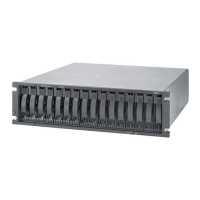
